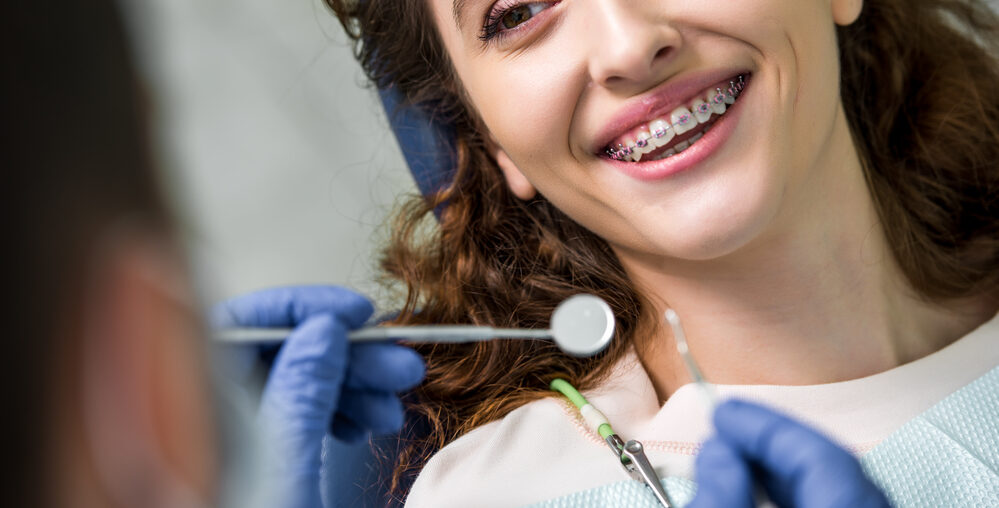Summary:
Choosing between braces and aligners can be overwhelming. This guide breaks down everything you need to know to make the right decision for your teeth. We compare effectiveness, cost, comfort, and appearance, ensuring you have all the information needed. With expert insights, real-life experiences, and localized recommendations for a Cypress dentist, you’ll find the best solution for your smile. Plus, see braces before and after results to understand their impact.
Deciding between braces and aligners isn’t just about straightening teeth—it’s about lifestyle, comfort, and long-term dental health. Whether you’re considering traditional metal braces or clear aligners like Invisalign, the choice depends on factors like severity of misalignment, cost, and personal preferences.
With so many options available, how do you know which is right for you? This guide breaks down the differences, benefits, and drawbacks of each treatment, helping you make an informed decision with insights from experienced Cypress dentists.
The Growing Popularity of Orthodontic Treatments
Did you know that over 4 million people in the U.S. wear braces, and more than 10 million have used Invisalign? (Source: American Association of Orthodontists). Straightening teeth isn’t just for aesthetics—it improves bite function, prevents dental issues, and boosts self-confidence.
Understanding Braces
What Are Braces?
Braces are orthodontic devices that use brackets, wires, and elastic bands to gradually move teeth into alignment. They are attached to the teeth and adjusted periodically by an orthodontist.
Types of Braces
- Metal Braces: Traditional and highly effective, but visible.
- Ceramic Braces: Less noticeable but slightly more expensive.
- Lingual Braces: Placed behind the teeth, making them invisible but harder to clean.
- Self-Ligating Braces: No rubber bands needed, reducing friction and discomfort.
Benefits of Braces
- Effective for severe cases – Works for complex misalignment issues.
- Durable and reliable – Can’t be removed, ensuring treatment compliance.
- Affordable compared to aligners – Traditional braces often cost less than Invisalign.
Braces Before and After Results
Seeing braces before and after photos can be motivating. Many patients experience dramatic transformations in 12-24 months, correcting gaps, overbites, underbites, and crooked teeth.
Understanding Aligners

What Are Aligners?
Aligners, like Invisalign, are clear, removable trays custom-made to fit over your teeth. They gradually shift teeth into alignment without wires or brackets.
Benefits of Aligners
- Nearly Invisible – Great for those wanting a discreet option.
- Removable – Can eat and drink without restrictions.
- Comfortable – No metal parts causing irritation.
- Faster Treatment in Some Cases – Some cases see results in 6-18 months.
Braces vs. Aligners: Key Comparisons
| Factor | Braces | Aligners |
|---|---|---|
| Visibility | Visible | Nearly invisible |
| Comfort | Can cause irritation | More comfortable |
| Maintenance | Requires careful cleaning | Easy to clean and removable |
| Effectiveness | Best for severe cases | Ideal for mild to moderate cases |
| Cost | Generally more affordable | Slightly more expensive |
Making the Right Choice: Which One Is Best for You?
If you have a complex dental issue, braces might be the best option. However, if you’re looking for aesthetic appeal and convenience, aligners are a great choice.
Questions to Ask Your Cypress Dentist Before Deciding
- How severe is my misalignment?
- What’s the estimated treatment time?
- Which option fits my budget?
- Do I need extractions or additional procedures?
Cost Comparison: Are Aligners Worth the Extra Price?
Braces typically cost $3,000 to $7,000, while Invisalign and other aligners range from $4,000 to $8,000 (Source: American Dental Association). The cost difference is often due to convenience and aesthetics rather than effectiveness.
“Straight teeth improve oral health and confidence—investing in the right treatment pays off for a lifetime.” – Dr. Smith, Orthodontist in Cypress, Texas.
Conclusion
Both braces and aligners offer unique advantages. The right choice depends on your dental needs, lifestyle, and budget. Consulting a Cypress dentist ensures you get the best recommendation for your specific case. Ready to transform your smile? Schedule a consultation today!
FAQs
1. How long do braces take to straighten teeth?
Braces typically take 12-24 months, depending on the severity of misalignment.
2. Can I switch from braces to aligners?
Yes, in some cases. Consult your orthodontist to see if a transition is possible.
3. Are aligners painful?
Aligners cause mild discomfort when switching trays, but they are generally less painful than braces.
4. Do braces work better than aligners?
For severe misalignment, braces are more effective. Aligners work well for mild to moderate cases.
5. Can I get aligners if I have dental work (like crowns or bridges)?
It depends. Consult a Cypress dentist to assess if aligners are suitable for you.




